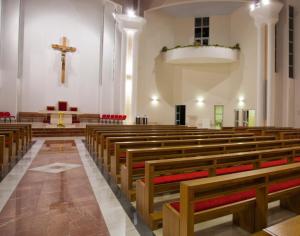By Franklin Dumond
Churches, like other organizations and the people who participate, move through predictable cycles. In the institutional memory of every church there is the awareness that average attendance varies from year to year. Anyone who has been part of a congregation for any length of time will have experienced those occasions when more people attend now than used to attend. Seasoned members will also have experienced those occasions where fewer people attend now than in the past.
Some years ago, one church consultant described churches and their attendance patterns as either being on the incline (growing and increasing), on the recline (stable, on a plateau), or on the decline (fewer attending now than used to attend). Most observers of the American church landscape suggest that at least 80% of churches are reclining or declining.
The net result of long term decline is always death. So why don’t more churches address the serious issue of decline?
- Poor record keeping disguises decline. I once helped stage a picture for some church publicity. We wanted to show the auditorium as full of people, but it was a weekday and only a handful of people were in the building when the photographer arrived. No problem. He simply staged them along the center aisle and framed the shot looking down the aisle. By cropping out the rest of the picture we had a full house with only a couple of dozen folks present!
 My wife observed recently that the church looked “pretty full this morning” but in actuality the seating capacity was seriously underutilized at only about 50% occupied. I counted. She observed. My count did not match her observation although she admitted the seating patterns made it look like a larger crowd was present.
My wife observed recently that the church looked “pretty full this morning” but in actuality the seating capacity was seriously underutilized at only about 50% occupied. I counted. She observed. My count did not match her observation although she admitted the seating patterns made it look like a larger crowd was present.
Unless church leaders count and compare the counts from week to week, from month to month, or from year to year decline may easily be disguised.
- Righteous Remnant Theology often predicts a falling away from the church because people in general just cannot accept the hard truth of the Gospel. Decline in this scenario has to do more with decline in standards and errors in theology rather than loss of numbers.
- Decline is the new normal. Congregations that experience long term decline can reach the point that decline is expected. Many worshippers have little if any experience in another church and are simply unaware of any other scenario.
- We’ve built it so they should come. This philosophy of ministry worked very well in the 1950’s when it was expected that folks should attend church. That social or cultural expectation no longer exists, so new folks now attend church only if they are invited by someone they know and trust.
- A lack of introspection, and thus lack of personal responsibility, can speed decline. As a young pastor I found a box of old church newsletters. While reading through them I noticed a particularly personal confession from a former pastor. He was a seasoned veteran. He also took a hard look around and noticed that there were no conversions for three months. At that point, he began looking inside himself since he felt a keen responsibility to model personal evangelism. If he had not taken the time for this personal introspection the decline would probably have continued.
- Churches prefer to reach one person rather than one neighborhood full of people. Remember a broken clock is still correct twice each day. It is very easy to excuse what we are currently doing because once in a while we connect with one person. Isn’t it worth it to reach even one? Maybe not, when similar resources of time, talent and treasure could reach a neighborhood full of people by intentional outreach.
Periods of decline are inevitable. Persistent decline, however, was never the intention of the Lord Jesus who announced that the gates of Hell would not prevail against His Church.